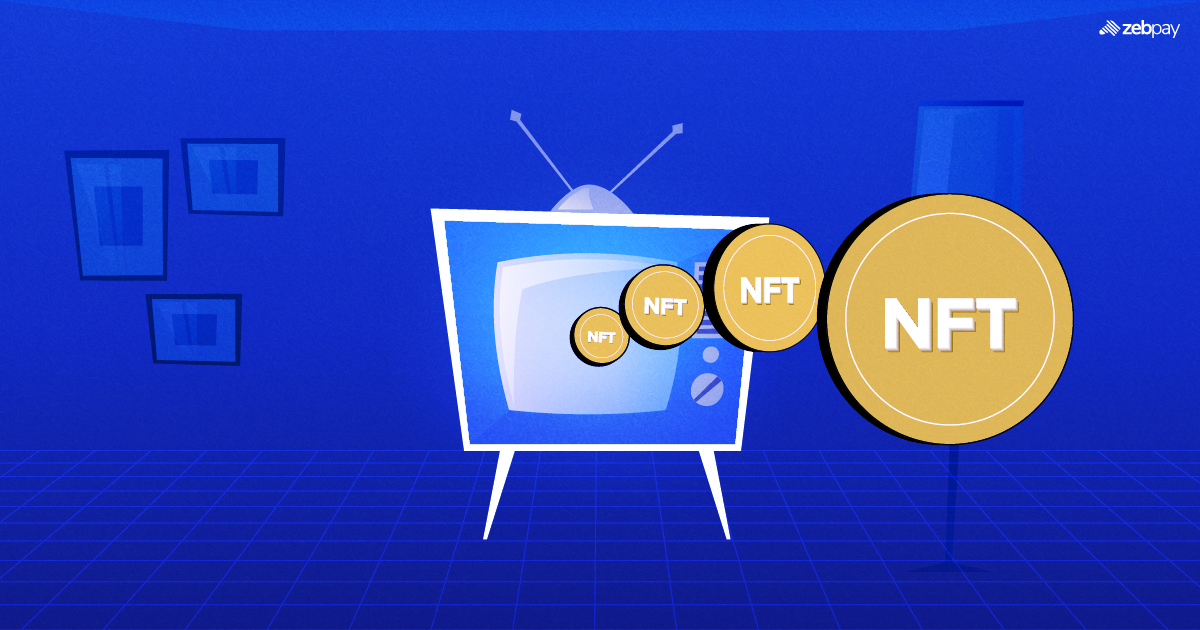Whether it is Dua Lipa’s ‘Levitating’ or Beyonce’s ‘XO,’ we all have heard stories of our favorite artists getting sued for copyright infringement. Plagiarism is rampant in the creative fields – films, music, or art. However, what if we told you that a blockchain-backed technology could solve this million-dollar problem?
Non-fungible tokens (NFTs) are the key to solving such problems. The entertainment industry is increasingly warming up to the idea of NFTs as a means to combat plagiarism. In addition, NFTs act as select clubs with exclusive content for their niche fans. To know more about all this, we will first need to understand what NFTs are, which NFT marketplaces are suitable for long-term investors, and how NFTs are revolutionizing the entertainment industry. Lastly, we will discuss key takeaway points on evaluating NFTs as long-term investments.
Before we get into details, imagine you are an upcoming artist making music tracks in your home. Week after week, you are publishing new music on social media platforms such as Instagram, Facebook, etc., and one of your reels goes viral. Then, someone starts using that music without giving you any credit. You would feel betrayed, right? Some might argue that one can file for copyrights, but this is a cumbersome process that only a few can afford. NFTs have leveraged blockchain networks to tackle this problem and have positively impacted the entertainment industry.
Can a solution that helps artists protect their intellectual property encourage investors to consider NFTs as a good investment option? To know more about this, let us understand what NFTs are.
What are NFTs?
NFTs are digital certificates that are built on the blockchain network. Most NFTs are built on the Ethereum network. The digital certificate guarantees the asset’s ownership. You might be wondering if the digital asset is sold further to someone, then how can one determine the original creator of the art? To answer this question, we need to understand that NFTs are built on a blockchain network that maintains a public ledger and records every transaction. Transactions on blockchain once appended cannot be changed or removed.
Such a feature provides transparency and wins the buyer’s and the seller’s trust. Artists can earn royalty for the rest of their lives without worrying about plagiarism. For those wondering how artists can produce their art through NFTs – let us further understand the NFT minting process.
How to mint NFTs?
An artist has to choose a crypto exchange or a crypto wallet. Once that is complete, the artists must select the NFT marketplace to launch their art. A few of the top NFT marketplaces are Foundation, OpenSea, Rarible, etc. Then, one can select their art, fix the terms and conditions regarding royalty and payments, and launch it. For NFT investors, it’s important to understand how to mint NFTs and the several real-world use cases that make them a popular investment tool.
NFTs’ impact on the entertainment world
Globally, the entertainment industry is valued at approximately US $ 2.2 trillion (Rs 15,000,000 crores). Despite such big valuations, the industry is close-knit, and outsiders are not generally welcome. However, with the launch of the NFTs, small-scale indigenous artists are coming into the limelight. For example, one of the NFT communities, the Arabian Camels, has invested Rs 375 crores in making a Hollywood film called “Antara”. Furthermore, big-ticket actors, studio heads, and directors such as Reese Witherspoon, Bob Iger, and Rupert Murdoch are investing in NFT technology to produce TV series and films.
Read more : Are NFTs becoming mainstream
Final thoughts
NFTs have perhaps democratized the entertainment industry by encouraging young talent to put out their work without the fear of intellectual property theft. In addition, NFTs have given rise to artists with a niche and limited audience. Artists can create exclusive content on their NFTs for their fans.
As investors, if we are interested in making long-term investments, we should research thoroughly before making any investment decisions regarding NFTs. Since minting NFTs is becoming an accessible technology, it is crucial for an investor to study the NFT’s owner and the kind of engagement and social media traction that piece of art has garnered.

